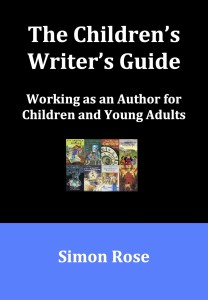What’s it all about? An excerpt from The Children’s Writer’s Guide
“This is by far the best book I have picked up to help me kick start my writing!”
Chapter Four: Where Do Ideas Come From
One of the most common questions asked of authors, whether from children during school visits or in interviews, is “Where do you get your ideas?” In so many ways, ideas are all around us – in newspapers, magazines, pictures, photographs, other books whether fiction or non-fiction, television, movies, even video games. History can be a constant source of inspiration for writers, but so are personal experiences, family vacations, family, friends, or pets. Many writers have had ideas come to them in dreams – often not the entire novel, but at least a significant enough piece of the puzzle to set them on their way to crafting the actual story. My own ideas come from anywhere and everywhere: when out walking the dog, in the car, something in a conversa
for writers, but so are personal experiences, family vacations, family, friends, or pets. Many writers have had ideas come to them in dreams – often not the entire novel, but at least a significant enough piece of the puzzle to set them on their way to crafting the actual story. My own ideas come from anywhere and everywhere: when out walking the dog, in the car, something in a conversa
tion, a newspaper story, a billboard, an item on the evening news, TV, movies, books of all kinds, song lyrics, historical events, ancient mysteries, long-lost civilizations, the supernatural, ghost stories, the paranormal or something completely out of the blue. Sometimes the challenge is to stop having ideas. I’ve been known to get ten ideas at once, which amazes my school audiences, but I also have to point out that I can go for six months with no ideas at all. Some of the concepts may never be used or may be only part of a story or a title. The ideas could even feature a character or a piece of dialogue and you aren’t sure where they come from. However, I do try to record as many ideas as I can, since I never know when they might fit in with a story I’m writing. Even ideas that don’t seem to work right away may prove useful one day.
As a writer, I often find myself wondering “what if?” This can in itself lead to many story ideas, some of which may end up being more developed than others. What if you received a letter informing you of your acceptance into a school for wizards? Or discovered a door into another universe at the back of your bedroom closet? Or a flying boy dressed all in green appeared at your bedroom window, inviting you to take a journey to a magical land? Perhaps you followed a rabbit down a hole and ended up in a bizarre underground universe. What if you met someone who’d been imprisoned inside a painting for over three hundred years? If you could travel back in time, where would you go? What would you do if you had a clone for the day? Whether this is how Harry Potter, The Chronicles of Narnia, Peter Pan, Alice in Wonderland, The Alchemist’s Portrait, or The Clone Conspiracy first came about isn’t the point. It’s more about how this type of thinking sets the thought process in motion.
You might even want to conduct your own personal “what if” exercises with a few story starter ideas. For example, what kind of a story might you able to conjure up from some of these random sentences? “He turned the corner and couldn’t believe it when he saw …” “I went to collect the mail and saw a letter from …” “Behind the bookcase was a small mysterious door …” “In the attic was an old dusty box …” “I found an old-fashioned ring in the cupboard and when I tried it on …” Even if you have an idea for a story, sometimes it’s still tough to know where to start, and although these sentences might not lead you to create a classic of children’s literature, they can help with your inspiration.
The Children’s Writer’s Guide is available as an ebook and as a paperback on Amazon, Kobo, Barnes and Noble, iBooks, Smashwords and many other locations.



